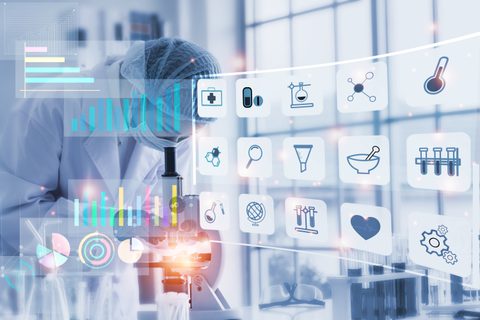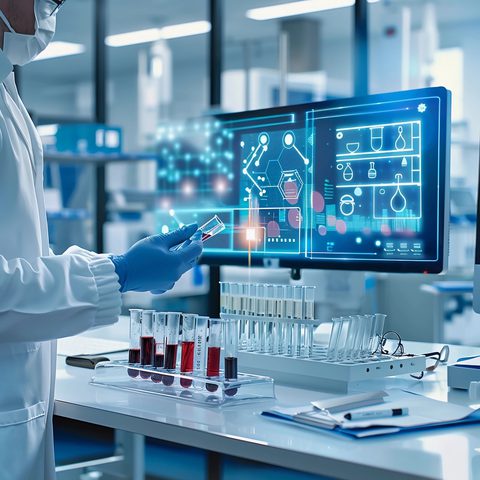

Reflections from Biotrans 2025: Charting the Future of Biocatalysis in Pharmaceuticals
Fresh from an energising week at Biotrans 2025 in Basel, Daren Bryce and Erik de Vries of BRAINBiocatalysts Life Science Solutions return with deep insights into the evolving landscape of biocatalysis in pharmaceutical and life science innovation.
More than 650 industry leaders, academic pioneers, and technology disruptors travelled to Basel to the most impactful biocatalysis conference of the year. It was encouraging to see applications of enzymes in more and more complicated synthetic routes, providing biological alternatives to what previously was strictly the province of hard core organic chemistry.
Key Trends and Challenges Identified at Biotrans 2025
1. Bridging Enzyme Discovery and Scale-Up
One of the most obvious challenges was the disconnect between enzyme discovery and commercial application. While discovery platforms continue to improve in speed and sophistication, including AI-driven (zero-shot) enzyme design and engineering, the industry still faces hurdles in transitioning these promising enzymes into high-yield, cost-effective manufacturing processes. Several talks highlighted the need for integrated platforms that combine enzyme engineering, host strain development, and scalable fermentation from the outset.
At BRAINBiocatalysts, we’re addressing this exact gap through a unified offering: combining our proprietary MetXtra™ discovery engine with industrial Plug & Produce strain libraries optimised for full scale manufacturing, enabling fast and low risk progression from concept to commercialisation.
2. Artificial Intelligence Gains Traction
A whole session was dedicated to Machine Learning and AI. Large datasets are being used to train models that are then used to predict beneficial mutations. While some in the audience were sceptical of this technology, fearing over-hyping its capabilities, several convincing examples were presented of the validity of an in-silico approach over more classical protein engineering. Development timelines are necessarily shortening and with the pharma industry’s desire to perform rounds of directed evolution within 7-14 days, the modern computational tools have certainly earned their place in workflows designed to minimise experimentation in the wet lab.
Key take-away: sharing of scientific data in research papers in a standardised format will improve the datasets used for ML and it is important to also share negative or unexplained results within the community as long as it is confirmed to be accurate.

3. Biocatalysis for Complex Molecules and (Mixed) Novel Modalities
From chiral amines to nucleoside analogues and the incorporation of non-canonical amino acids expanding the sequence space, biocatalysis is increasingly enabling reactions that traditional chemistry can’t efficiently perform. Late-stage modification of drug candidates now involves many unspecific peroxygenase (UPO) catalysed oxidations with superior total turnover numbers compared to P450 enzymes. Advances in ATP cofactor recycling make ATP-dependent enzymes much more practical. Iron-Sulphur clusters are becoming more mainstream. Enzymatic oligonucleotide synthesis and enzymatic modification of peptides or antibodies/ADC’s are an exciting upcoming field. We are finding that E. coli is not always the most suitable production host. The challenge remains in accessing highly selective enzymes with predictable scale-up behaviour, particularly for reactions involving multiple steps or cofactor dependencies.
Key Trend: There is a strong industry demand for multi-enzyme cascade development, supported by predictive modelling, strain co-expression systems, and intelligent process designs using one-pot strategies, enzyme immobilisation and/or flow biocatalysis.
4. Sustainability is Now Commercially Critical
With growing pressure to decarbonise pharma supply chains, biocatalysis is proving to be a sustainability enabler, offering improved atom economy and lower process mass intensity (PMI). Solvent-free processes are potentially greener, but sometimes non-aqueous processes enhance substrate solubilisation giving higher space-time yields. This demonstrates that biocatalytic process development needs to approach the problem from all possible sides. Generally, biocatalysis offers a more favourable energy use but again we need to strike a balance between faster processes at elevated temperatures using robust enzymes vs. the added energy inputs. Several speakers also stressed the importance of life-cycle analysis as a decision making tool in the earliest stages of their project.
Industry Outlook: Pharma companies want more than just “green promises”. They need biocatalysts that deliver both performance and sustainability at scale.
How BRAINBiocatalysts is Supporting the Future of Biocatalysis
The themes of integration, scalability, and speed-to-market closely align with our own mission at BRAINBiocatalysts Life Science Solutions. With a unified brand that combines enzyme discovery and engineering, strain optimisation, and industrial manufacturing, we’re supporting the industry to overcome its most pressing barriers.
Whether it’s rapidly screening unique metagenomic sequences, tailoring microbial production strains, or scaling to 10,000 L fermentations, our end-to-end offering delivers more than just R&D support. It delivers commercial viability.
Thanks to everyone we met at Biotrans 2025. Your ideas, feedback, and collaborations inspire us. If you didn’t catch Daren or Erik in Basel, connect with us here to learn how we can support your next breakthrough.